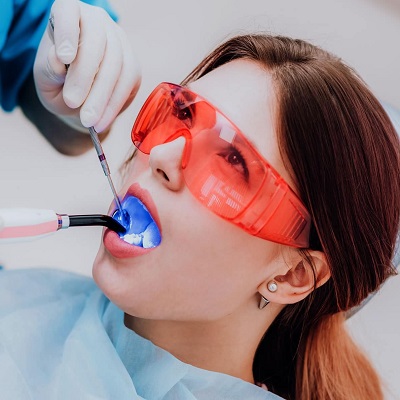Caring for your teeth after receiving a Dental Tooth Filling is crucial for ensuring the longevity of the filling and maintaining overall oral health. Fillings are designed to restore the function and integrity of your teeth after decay or damage, but they require proper care to prevent complications. In this article, we’ll explore effective strategies for post-treatment care, potential risks, and the importance of maintaining good oral hygiene.
Understanding Dental Fillings:
Dental fillings are used to treat cavities or restore damaged teeth. The filling material, which can be composite resin, amalgam, or gold, fills the cavity left by decay, protecting the tooth from further damage. After getting a filling, it’s essential to follow specific care practices to ensure the filling lasts and your overall dental health remains intact.
Immediate Aftercare:
1. Follow Your Dentist’s Instructions:
After the procedure, your dentist will provide specific instructions regarding your care. It’s important to follow these recommendations closely to ensure the best outcome.
Avoid Chewing on the Filled Tooth: For at least 24 hours, avoid chewing on the side of the mouth where the filling was placed. This helps prevent any pressure or stress on the filling while it sets.
Sensitivity Management: Some patients may experience sensitivity to hot or cold temperatures after a filling. Your dentist may suggest over-the-counter pain relief options if needed.
2. Be Mindful of Anesthesia Effects:
If you received local anesthesia during the filling procedure, be cautious as the numbness wears off.
Avoid Biting Your Cheek or Tongue: While numb, you may accidentally bite your cheek or tongue, leading to discomfort or injury. Be aware of your mouth's sensations as the anesthesia fades.
Gradual Return to Normal Activities: Take your time before resuming eating or drinking until you regain full sensation in your mouth.
Oral Hygiene Practices:
1. Maintain Good Oral Hygiene:
Proper oral hygiene is vital for protecting your dental filling and overall dental health.
Brushing: Continue brushing your teeth at least twice a day. Use a soft-bristled toothbrush and fluoride toothpaste to gently clean around the filled area. Avoid aggressive brushing, as it can irritate the gums.
Flossing: Floss daily to remove food particles and plaque between your teeth. Be gentle around the filling to prevent dislodging it.
2. Use Mouthwash:
Incorporating an antimicrobial mouthwash into your routine can help reduce plaque and bacteria in your mouth.
Choose an Alcohol-Free Formula: An alcohol-free mouthwash is less likely to cause irritation and dryness. This is especially beneficial for patients with sensitive teeth.
Swish After Brushing: Use mouthwash after brushing and flossing to help eliminate any remaining bacteria and promote oral health.
Dietary Considerations:
1. Modify Your Diet Temporarily:
After receiving a dental tooth filling, you may need to adjust your diet temporarily to protect the filling and ensure your comfort.
Avoid Hard and Sticky Foods: For the first few days, steer clear of hard foods like nuts or hard candy that could potentially dislodge or damage the filling. Sticky foods like caramel or gum can also pull on the filling.
Opt for Soft Foods: Choose soft foods like yogurt, mashed potatoes, or smoothies during the initial healing period. This will help reduce the risk of irritating the filled tooth.
2. Stay Hydrated:
Drinking plenty of water is essential for overall oral health.
Water Intake: Water helps wash away food particles and bacteria, reducing the risk of decay. Aim for at least eight glasses a day to stay hydrated.
Limit Sugary Beverages: Minimize the consumption of sugary drinks, as they can promote decay and increase the risk of complications around the filling.
Regular Dental Check-Ups:
1. Schedule Follow-Up Appointments:
Regular visits to your dentist are essential for monitoring the health of your fillings and overall oral health.
Check for Issues: During your check-ups, your dentist can assess the condition of your fillings, identify potential problems early, and ensure that your oral health remains optimal.
Professional Cleanings: Professional cleanings every six months help remove plaque and tartar that regular brushing may miss, reducing the risk of complications.
2. Communicate Any Concerns:
If you experience discomfort, sensitivity, or any other issues after receiving a filling, communicate these concerns with your dentist.
Early Intervention: Addressing problems early can help prevent further complications, including the need for additional treatments or repairs.
Discuss Changes: If you notice changes in the filling or tooth structure, be proactive about discussing them with your dentist during your next visit.
Recognizing Signs of Complications:
1. Monitor for Sensitivity or Pain:
After getting a dental tooth filling, it’s normal to experience some sensitivity. However, be mindful of any significant changes.
Increased Sensitivity: If sensitivity persists beyond a few weeks or worsens, it may indicate that the filling is compromised or that further decay has occurred.
Persistent Pain: Ongoing pain in the filled tooth may signal issues requiring dental attention, such as a cracked filling or additional decay.
2. Check for Visible Damage:
Regularly check your filling for any visible signs of damage or wear.
Cracks or Chips: If you notice any cracks or chips in your filling, schedule an appointment with your dentist as soon as possible.
Changes in Shape or Size: Be aware of any changes in the filling’s shape or size, as this can indicate potential problems that need addressing.
Conclusion:
Caring for your teeth after receiving a dental tooth filling is essential for ensuring the longevity of the filling and maintaining optimal oral health. By following proper aftercare guidelines, practicing good oral hygiene, and scheduling regular dental check-ups, you can help protect your dental fillings and avoid future complications. If you have any concerns or questions about your fillings, don’t hesitate to reach out to your dentist for personalized advice and guidance. Your proactive approach will contribute to a healthier smile for years to come.





Comments